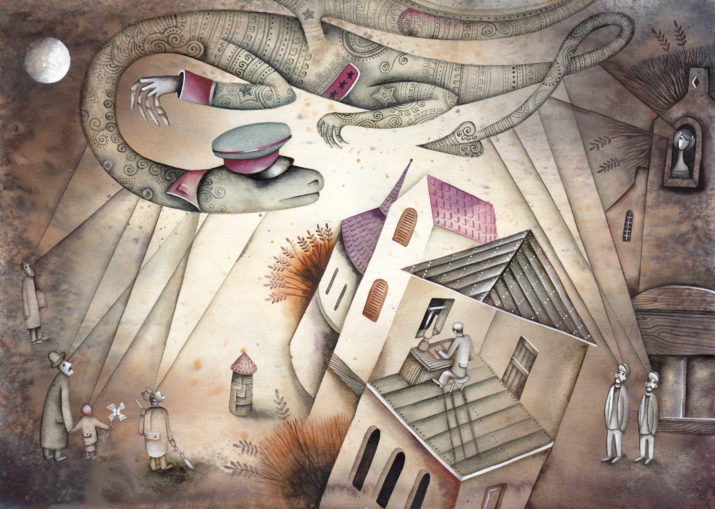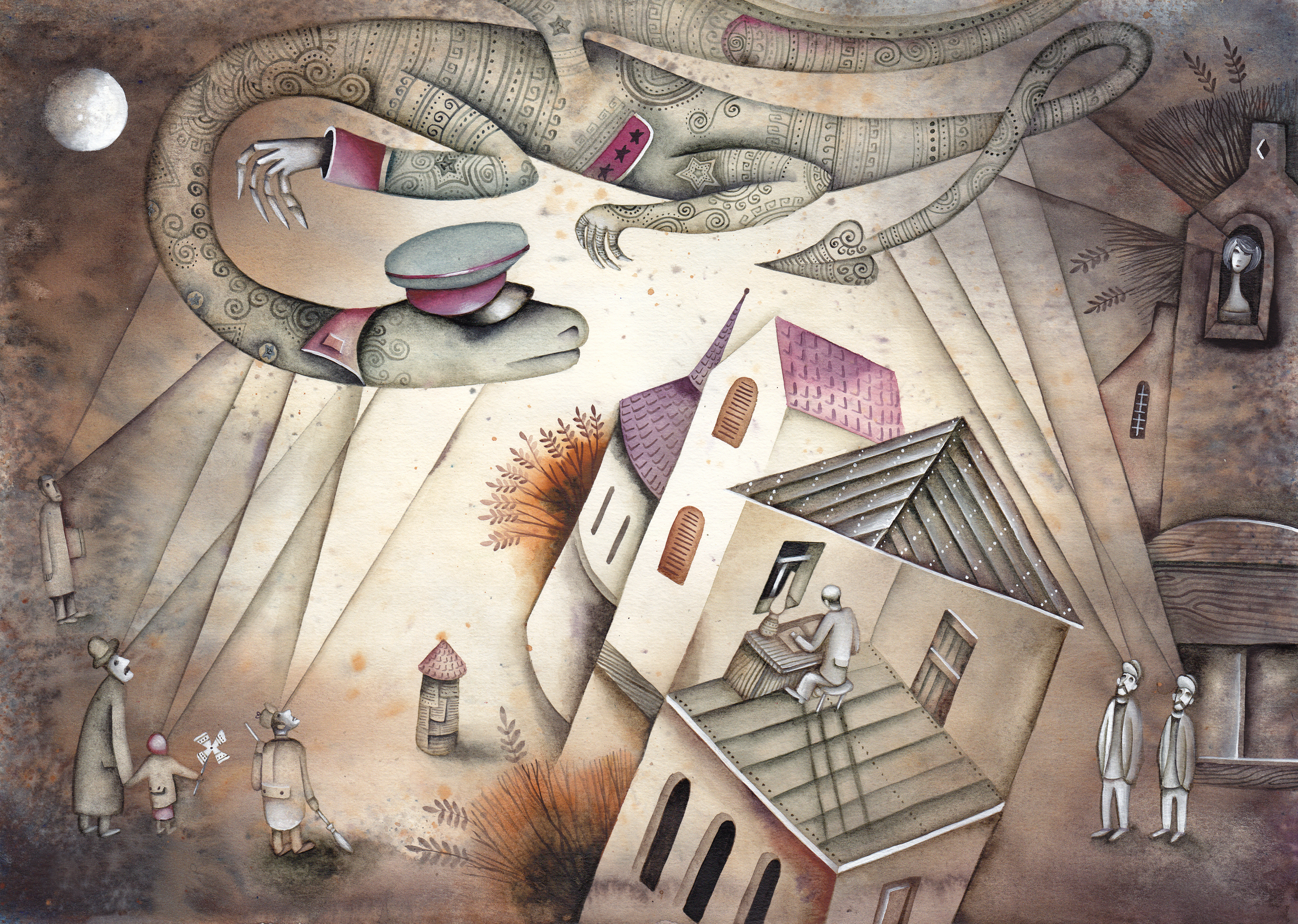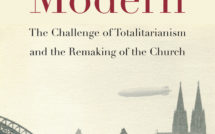

This is part of our special feature, Digitization of Memory and Politics in Eastern Europe.
Digital memory research has established itself since the 2000s as an academic discipline that explores the production and perception of the past as mediated by digital technologies. Digital memory studies presume that the contents and forms of memory cannot be separated from the communication technologies that transmit them, whose rules in turn mediate internet users’ knowledge about the past and shape their memory-related practices (Hoskins 2011, 2018; Mayer-Schönberger 2009; Thouvenin et al. 2018; van Dijck 2007). Digital memory theorists explore “a new hybrid form of ‘public and private” memories. These memories are “produced by the audience,” and “not simply shared and told […] but creatively constructed” in digital media (Garde-Hansen et al. 2009: 12). Scholars analyze aspects of a “connective memory,” rather than a collective memory shared by a social group and related to its identity (Hoskins 2011). The term “connective memory” refers to online memory, which emerges in conditions of pervasiveness of digital technologies, abundance of data, accessibility of digital archives, and instancy of connections between users. Connective memory implies that media users experience memory through simultaneous present and past; remember through building individual trajectories of contacts and accesses to data; and as social media users feel compelled to be active online and to demonstrate their emotions, in this case in relation to the events of the past, and share memories “without sharing” (Hoskins 2018).
Among various research areas in digital memory studies that are currently being developed, one in particular is the study of “digital memory wars.” This study focuses on the online production, circulation, and consumption of memory in political and cultural conflicts, in which the memories of digital media users become agonistic. In recent years, much attention has been drawn to the battles for the content of memory and meanings of the events of the past in the post-socialist states, where national meanings are being affirmed in cyberspace, current politics deeply affects the collective memory, and the events of the Soviet past are used to legitimize ongoing political conflicts (Blacker et al. 2013; Fedor et al. 2017; Rutten et al. 2013). Digital memory war studies provide a framework for analyzing how individual users, groups, and institutions participate in the co-creation and dissemination of competing memories, and employ various digital tools to promote their own interpretations of historical events and compromise the versions of their opponents. In particular, to the extent that these studies entail working with memory-related digital texts, practices, and formats, they provide an opportunity to find out how ordinary users produce, assimilate, or reject those identities, memories of the past, and interpretations of the present, influencing whether they become dominant or marginal.
“Successful” memoirs
When memories are used in media warfare, digital stories about the past acquire certain features that make them persuasive and appealing, to provoke an emotional response and enable them to go viral. What makes some memoirs “successful” in social media?
First, it should be noted that digital memory writing on popular media platforms is quite distinct from the work of professional historians. Each is guided by quite different criteria and addressed to different audiences. In popular media, regular users, who establish the priority of non-professional knowledge of history, appropriate the past. Professional historians have no privileges in this arena. Regular users hardly discriminate between academic publications, films, or computer games as sources of information. Individual experiences or family memories are more important, and easily outweigh scholarly arguments. In this version of the past, particular facts are often isolated from their contexts. Moreover, significant events that happened long ago can reoccur; and “similar” events separated from each other by decades or hundreds of years can be given the same meaning. Thus, for example, as will be shown later, for many Russian internet users the Soviet invasion of Czechoslovakia in 1968 has become equivalent to the Russian annexation of the Crimea in 2014.
Digital memory writers use storytelling techniques. Their historical narratives are plotted for conflict, climax, and resolution, constructed using literary formulas and genre conventions. Against a historical background, these stories highlight the ethical choices of individuals, good people against bad standing in for larger groups, parties, or nations, and culminate with a moral. Thus, digital memory combines entertainment and dramatization.
Though this type of presentation of memory is designed for a non-specialist audience, it does also employ markers of professional historical knowledge, which attest the credibility of the narrative. These include actual or simulated documents from the past, eyewitness accounts, and photographs.
Users engage in debates about the past when it is relevant to today’s political agenda. A “successful” story places and clearly highlights links between the past and the present. As their political value changes, so do the events of the past gain or lose the mass attention of users. Events of the past are treated by users as a means of self-identification. In online groups, users reproduce connective solidarity with like-minded people who reaffirm their values and attitudes in the present day by discussing memories of the past.
In such discussions, digital memories have to be agonistic, so the past is rarely neutral; it is mostly painted in black-and-white. Users’ attitudes towards history are passionately expressed: sharing memories helps to channel one’s affective state. Along with this emotionality is found verbal aggression, a characteristic feature of memory battles.
“Bychkov’s story:” A case study
In Russian social media, there are many stories in circulation that incorporate memories of the Soviet past, created by professional and amateur historians, journalists, propagandists, and ordinary users. In the situation of information warfare, which arose after 2014, there are armies of digital fighters who try to build historic narratives and counternarratives and delegitimize their opponents’ versions of memory. Why do their readers choose to believe some stories about the past and not others, and to accept and then assimilate them as memory? And when users debate each other’s memories, what happens when a false memory appears?
I would like to discuss one case, which shows how ordinary users of social networks participate in co-creation of false memory with pro-state Russian propagandists, and how they take part in dissemination of memory, which aims to legitimize the contemporary politics of the Russian state authorities. These data were collected on YouTube: I will focus on a story about the occupation of Czechoslovakia in 1968 published by the pro-Kremlin propagandist Nikolai Starikov.
On the Russian-speaking Internet (“Runet”), there are many bloggers who are keen to promote the Russian state’s view on history. One such author is Nikolai Starikov. He is a famous Russian public and political figure, writer, and blogger. Starikov is known as a representative of very conservative (anti-Western, pro-Stalinist) views, while in full support of president Putin. His blog includes many discussions about history, which go viral on Runet.
In 2016, Starikov published a text in his blog titled “Czechoslovakia 1968 – Russian kindness and German cruelty” (Starikov 2016). This text went viral on Russian Internet; it was reposted by various users and attracted many comments. This story and the discussion of it reveal how connective memory is created among social media users who choose to believe a memoir that facts show to be false.
Starikov’s post opened with the following statement:
We Russians are different from Europeans. We are a different civilization. And it becomes noticeable in everything. Including in the way we occupy. The entry of troops of the Warsaw Pact countries into Czechoslovakia in 1968 is a fully justifiable operation. We did not tolerate chaos in a friendly country and we prevented the destruction of our defensive belt. […] In Czechoslovakia, the same thing happened […], as in Ukraine in 2014. […] Order and security in Czechoslovakia was provided not only by Soviet troops, but also by […] the troops of the GDR. How did the Germans and Russians behave? What was the difference? – This material was sent to me by a reader of this blog…, Viktor Dmitrievich Bychkov.
Then, Starikov presented the following story:
These are my youthful memories. In 1968 I was at school […] My friend’s older brother, Anikin Vladimir, who took part in the events in Czechoslovakia, returned from the army. […] We all eagerly listened to the stories of an eyewitness.
According to this story, the soldier Vladimir together with the others had to control an airport near a certain “small Czech town.” It was a difficult mission because of the extreme hostility from the locals. The storyteller emphasized how naïve the Russian troops were, who were not allowed to use weapons to protect themselves. Then, according to the story, the GDR soldiers arrived in the same town:
It was like in a movie about the Great Patriotic War. First came motorcyclists with machine guns, then a column [of infantry]. In front and behind, armored personnel carriers with machine gunners ready to shoot. In the center of the column, there was a senior officer in a passenger car accompanied by other officers.
The Germans immediately imposed order on the locals. Then the story presents the following episode about young Czech hooligans who used to attack the Russians:
The hooligans […] had hit two soldiers with their car, seriously injuring them. The Czech personnel on the airfield watched with laughter […] And the [Russian] soldiers, though armed, could not do anything with these youngsters – they were not allowed to shoot.
But then […] a German patrol on two motorcycles with machine guns drove up to the airfield. The Germans quickly understood everything. The young men, seeing the German patrol, rushed to get away […] One motorcycle started following them. […] The machine-gunner immediately shot the two young men sitting in the front seats. The car stopped. Two of the men sitting in the back jumped out and ran.
The machine-gunner fired two short bursts at the ground to the left and right of the fleeing ones. One stopped, raised his hands and went back; the second kept running, trying to make a loop. This aroused the laughter of the machine gunner, and he cut the attempt short with a short burst […] The other man, with his hands up […] went, like a drunk, sobbing loudly. […] The German made him kneel down, hands behind his head […] The officer came up […] to the young man on his knees. […] Approaching at three meters, he shot him in the forehead, then calmly put the gun back and gave a command to his soldiers.
[…] The officer pronounced a brief speech in German, which the people who had been brought in front of him received sullenly. He probably explained to them who was boss, and how to behave. […] The Germans acted with such absolute certainty of their rightness and the correctness of what they were doing, that all the local people involuntarily and unconditionally obeyed them.
This episode is followed by other similar ones, where the Germans establish strict discipline by shooting the locals without any further discussion. Bychkov concludes his memoir:
For a police mission, the Germans are perfect. They know how to be occupiers and what to do with the occupied. Our army is not ready for this. To fight – yes. To win – yes. But to occupy and oppress the occupied people is not for us. ‘So, if the Germans had been the first to get to Prague, this could only have strengthened the friendship of the peoples […]. And the Czechs would now be having happy memories of the Germans in Prague and their “European Ordnung.
Readers’ reaction
This memoir ostensibly “sent by a reader.” raises many questions about its truthfulness. However, only a few readers expressed any scepticism about it. The majority of users not only supported the story but were also eager to prove it with memories of their own. So, why did readers believe this story?
Ordinary users tend to suspect any author of falsification whose version of events differs from their own. They tend to believe the stories that reinforce their already established attitudes. Memories of the past are checked for compliance with “how it should be.” As a result, in their efforts to steer a path through multiple versions of the past, users embed new information into the narratives and explanatory frameworks to which they are already loyal.
In this case, Starikov appeals to those readers who share certain views (such as “We Russians are different from Europeans” and “The entry of troops of the Warsaw Pact countries into Czechoslovakia in 1968 is a fully justifiable operation”). The memoir is rooted in Russian users’ media experience, that is, of films and narratives about the events of the Second World War. GDR officers and soldiers of 1968 are modelled on Nazis from Soviet WW2 films. The dramatization and clear contrast between the kind-hearted Russians and the stereotypically disciplined but cruel Germans obviously meet the expectations of users, who place this story into the existing framework of their common knowledge. Judging by their feedback, many readers see almost no difference between the two contexts, namely of the Nazi invasion of Russia in the 1940s and the alleged intervention of GDR troops in Czechoslovakia of 1968: “Germans” and “Russians” appear as the same actors in the same drama playing out in different places and times.
In their comments in Starikov’s blog and on the “Web Rasskaz” channel on Youtube, where this story was reposted, users react positively and support Bychkov’s testimony with the memories of their own relatives. These stories contain some similar elements including a repetitive detail about a “chalk line drawn by the Germans:”
User 1: “I believe this storyteller. I remember from childhood: my sister’s husband told me that the German officer on the street drew two [concentric] circles with chalk. […] In the inner circle he stood himself and directed the movement […] And if any of the locals happened to step into the second circle, he shot without warning.”[i]
The same story has been repeated by a number of other users, all of whom referred to the accounts of their fathers and friends. None of the users had seen it themselves, but all had learned about similar stories long ago.
User 2: “One of my classmates, Valery G. was “lucky” to be in the center of these events. […]. The behavior of the Germans was interesting: they stopped their tank, drew a circle around it with chalk, and warned that everyone crossing the line would be shot. And all those who doubted them went to the ‘better world.’”
User 3: “I confirm. I was also told by a participant in those events. Just the identical copy of this story.”
What may be the most disturbing aspect of these stories is that all its participants “saw” German troops in Czechoslovakia, whereas, according to the historians (Wenzke 2010), the GDR army was called off just hours before the invasion and took no part in it. In the 1990s, when historians obtained access to previously classified materials, it was revealed that this last-minute cancellation was due to the fear of provoking violence against the Germans. However, the GDR propaganda officially claimed that they participated in the operation as full members of the Warsaw pact.
So, whom did these witnesses see? The words of a real eyewitness give us a clue:
User 4: “As a participant in those events of the year 68 I can say, there was an order – […] not to open fire […] I will not talk about the Germans, but there were rumours about them using weapons. Personally, I had no contact with the Germans.”
In other words, from propaganda, the Soviet participants of the invasion “knew” that GDR troops were somewhere in Czechoslovakia. The rest was presumably built using collective memory of the “Germans” and the need for self-justification: it was Germans who were to blame for the deaths of the civilians. In social media a doubtful story meets with the cultural memory of Russian readers of Starikov’s blog. These scattered and long forgotten individual recollections become meaningful in lending credence to Bychkov’s story.
Functions of Bychkov’s story
Bychkov’s memoir has a clear political message. It draws a parallel between the events in Czechoslovakia and the Russian actions in Crimea in 2014. The story supports belief in the moral rightness of the Russian military. The functions of this story can be summarized as follows.
The story helps to remove the burden of guilt for the invasion of 1968. As one of the commentators, who justifies his own father and blames the Germans, puts it:
User 5: “My father was a participant in those events, [he] told how the GDR Germans shot dead a demonstration by the Czechs with machine guns. […] The Germans, they were, and remained beasts.”
The story draws explicit historical parallels between 1968 and 2014, legitimizes Russian actions in Ukraine, demonstrates the perversity of the Europeans, and emphasises the impeccable moral superiority of “our” party in the conflict. The readers support this idea with their own arguments:
User 6: “The Czechs painstakingly display their resentment of the Russians for the ‘occupation’ in 1968, but they should have thanked the Russians for not allowing the Czechs to turn Czechoslovakia […] into a bloody Maidan.’”
User 7: “That raises a question. How to act properly? To be cruel […] like the Germans and other Americans and Western partners do, or be merciful, as Russia always is. […] But somewhere in the Scriptures it was said that the easiest ways usually lead to hell, and the road to heaven is always thorny and difficult. So maybe that’s why Russia does not choose the easy way (as for example many patriots called for troops to enter Ukraine and conquer it in a couple of weeks at the very beginning of the conflict …).”
Finally, the Czech and Slovak side, for whom the events of 1968 remind them of the people’s heroism, is portrayed, on the contrary, in a way that downplays the people’s resistance, and presents them as “cowards” ready to obey the “Western boss;” which portrayal is needed in order to draw another parallel with the Ukrainian protesters of Maidan.
Conclusion
This case demonstrates how, in digital media, a new element of connective memory can be created based on fragments of users’ cultural memory. As a blogging propagandist, Starikov launches a story that is built using the basic techniques of successful digital storytelling. This memoir triggers readers’ reactions: it appeals to pop-cultural knowledge, stereotypical ideas about Russian and German national characters, and images from films about “occupying Nazis.” It also relies on rumors and oral history from the Soviet era. But with the help of the readers connected in the social network, all previously unrelated experiences, fragments of personal memories, and forgotten rumors suddenly become visible and coalesce into a single testimony. Thanks to the network, a counter-factual historical narrative is built in which ordinary users play the role of co-creators, who enhance the credibility of this story with their own memories, and who transform it—first, for each other, and then for other users who repost this text on their pages—into seemingly reliable historical evidence. This evidence has its own pragmatics and political value.
This case shows also how digital memory can blend old cultural memories with the current political agenda. The same discussions could have been conducted on Runet at any time in its existence, but only in the context of the recent actions of the Russian army in Ukraine have they become meaningful and useful.
In the context of digital memory wars, this case is hardly exceptional. There are quite a few ‘half-truthful’ memoirs in circulation in social media which support different attitudes to the present political situation. Questions about how media users make decisions about the credibility of history-related content and materials, as well as how they make their personal memories a part of connective memory, and become absorbed in the distribution of ideological messages on the Internet suggests scope for further research in the field of digital memory wars.
Vera Zvereva is a Senior lecturer in Russian language and culture at the University of Jyväskylä. She has published on digital media communication and television studies, including monographs ‘Network Talks: Cultural Communication on the Russian Internet’ [in Russian] (2012) and ‘Real Life on TV Screen’ [in Russian] (2012), and the collected volume ‘Memory, Conflict and New Media: Web Wars in Post-Socialist States’ (ed. with Ellen Rutten and Julie Fedor) (2013). Her research focuses on how digital technologies shape social media users’ language and memory and mediate political discourse.
References
Blacker U., Etkind A. and J. Fedor (eds.) (2013) Memory and Theory in Eastern Europe. Palgrave Macmillan.
Fedor, J., Kangaspuro, M., Lassila, J., Zhurzhenko T., and A. Etkind (eds.) (2017) War and Memory in Russia, Ukraine and Belarus. Palgrave Macmillan.
Garde-Hansen, J. Hoskins, A. and A. Reading (eds.) (2009) Save As… Digital Memories. Palgrave Macmillan.
Hoskins, A. (2011) ‘Media, Memory, Metaphor: Remembering and the Connective Turn’ in Parallax, Vol. 17, no 4, pp. 19-31.
Hoskins, A. (ed.) (2018) Digital Memory Studies: Media Pasts in Transition. Routledge.
Mayer-Schönberger, V. (2009) Delete. The Virtue of Forgetting in the Digital Age. Princeton University Press.
Rutten E., Fedor J. and V. Zvereva (eds.) (2013) Memory, Conflict and New Media: Web Wars in Post-Socialist States. Routledge.
Starikov, N. (2016) ‘Czechoslovakia 1968 – Russkaia Dobrota I Nemetskkaia Zhestokost’’ https://nstarikov.ru/blog/71218 Accessed 01.05.2018.
Thouvenin, F., Hettich, P., Burkert H. and U. Gasser (eds.) (2018) Remembering and Forgetting it the Digital Age. Springer.
van Dijck, J. (2007) Mediated memories in the digital age. Stanford University Press.
Wenzke R. (2010) ‘The Role and Activities of the SED, the East German State and its Military during the “Prague Spring” of 1968’ in M. Stolarik (ed.) The Prague Spring and the Warsaw Pact Invasion of Czechoslovakia, 1968: Forty Years Later. Bolchazy-Carducci Publishers. pp. 137–164.
[i] All users’ comments have been anonymised for ethical reasons. The quotations have been taken from the following comment threads: https://nstarikov.ru/blog/71218 and https://www.youtube.com/watch?v=R8LxXR-MGSA Accessed 01.05.2018.
Photo: Dragon as alegoria of soviet secret political police | Shutterstock
Published on September 10, 2019.




